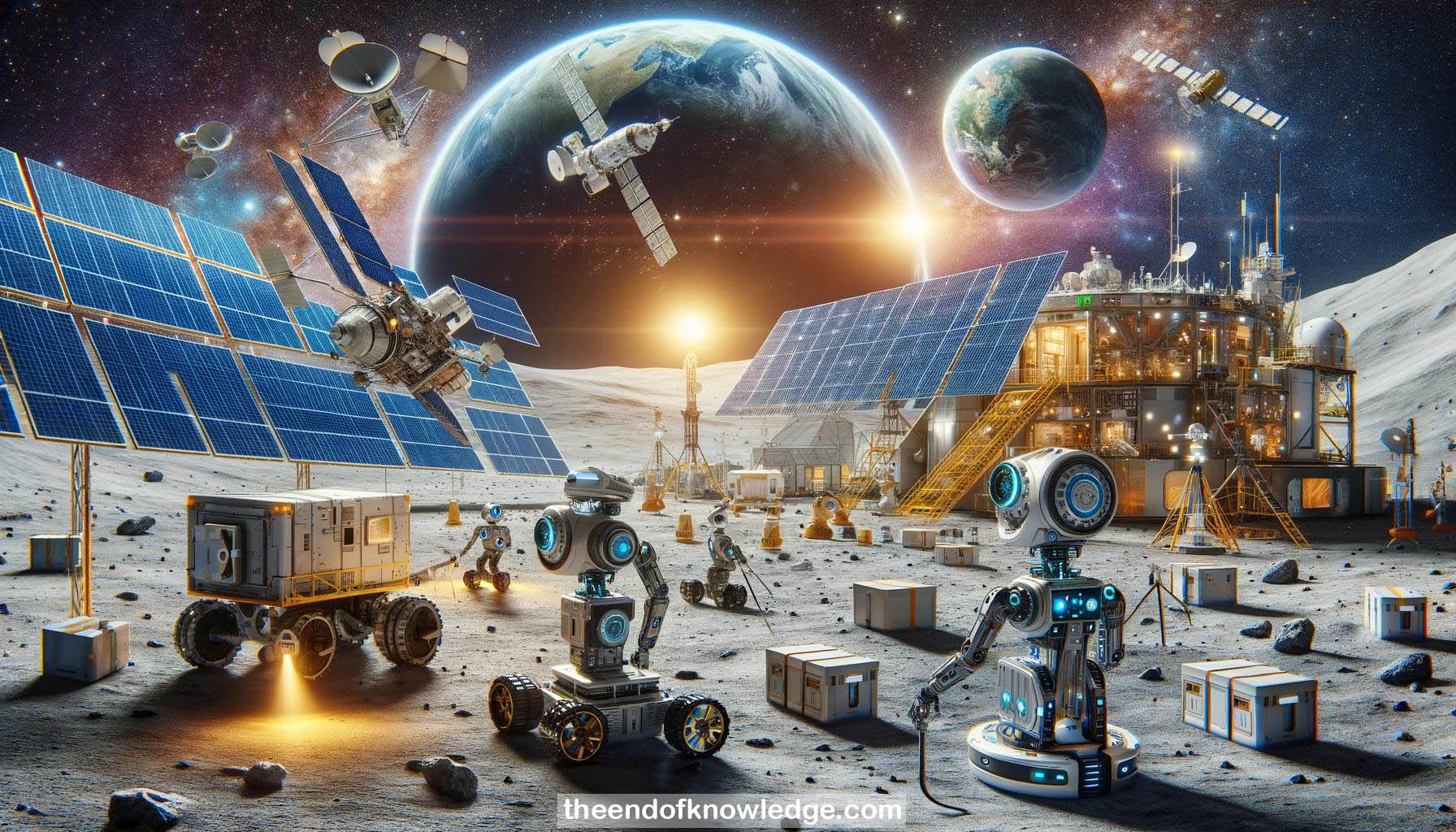 >
>
Concept Graph & Resume using Claude 3 Opus | Chat GPT4o | Llama 3:
Resume:
1.- AI's Role in Space Robotics: AI is revolutionizing the architecture of robotic systems by enhancing functionalities such as perception, decision-making, and prediction, improving performance and reducing development costs.
2.- Sustainable Space System Design: Future spacecraft and robots must be built for longevity, requiring robust mobility, autonomous capabilities, reconfigurable hardware and software, and self-diagnostic AI techniques.
3.- Gap Assessment Report: Highlights the need for advanced computational power, space-grade architectures, and active perception systems to enhance autonomous functionalities in space.
4.- Commercial Partnerships in Space: Companies like SpaceX and Blue Origin play crucial roles in space exploration, leveraging AI for environmental monitoring and long-term habitability on other planets.
5.- Environmental Monitoring: Earth-observing satellites and AI analyze massive data sets, helping to monitor climate impacts, predict trends, and manage resources efficiently.
6.- Autonomous Driving Technologies: AI technologies used in autonomous cars on Earth have potential applications in space, including advanced perception and navigation systems.
7.- Sustainable Space Operations: AI can enhance mission sustainability through autonomous servicing, prolonging satellite lifetimes, and recycling space debris.
8.- AI in Space Missions: AI technologies support various mission stages, from launch to orbit operations, providing autonomous decision-making and reducing reliance on manual interventions.
9.- Digital Twins for Spacecraft: AI creates digital replicas of spacecraft, allowing precise health monitoring, optimizing lifecycle management, and enhancing operational sustainability.
10.- Global Space Regulations: AI and satellite data can support international regulations by monitoring environmental impacts, pollution, and resource utilization, fostering global cooperation.
11.- AI and Legal Frameworks: Establishing legal frameworks and international agreements is crucial for sustainable space operations, ensuring responsible resource allocation and environmental protection.
12.- Human Presence on the Moon: The vision includes permanent human bases on the Moon, requiring cooperative efforts, legal agreements, and sustainable communication and resource management systems.
13.- Exploration of Icy Moons: AI enables the exploration of distant icy moons like Enceladus and Europa, requiring advanced autonomous systems to penetrate and study these environments.
14.- Search for Extraterrestrial Life: AI assists in identifying signs of life on exoplanets by analyzing atmospheric processes, a significant goal for space exploration in the 21st century.
15.- Education and Workforce Development: Emphasizing AI and space technologies in education to nurture a skilled workforce, ensuring the sustainability of the space sector.
16.- Space Debris Management: AI technologies aid in tracking and retrieving space debris, ensuring safer and more efficient operations in low Earth orbit.
17.- Operational Sustainability: AI enhances operational processes and standardization, ensuring interoperability among different space assets and stakeholders.
18.- Financial Sustainability: AI-driven space technologies attract private capital and venture investments, reducing reliance on government subsidies and fostering a robust space industry.
19.- Environmental Sustainability: AI helps monitor and mitigate space pollution, ensuring the long-term viability of space missions and the safety of Earth's orbital environment.
20.- Resource Utilization on Other Planets: AI-driven systems manage habitats and resources on other planets, supporting long-term human presence and sustainable living conditions.
21.- AI-Enhanced Space Robotics: Autonomous robots equipped with AI perform complex tasks such as repairs and maintenance, extending the operational life of space assets.
22.- Communication and Coordination: AI facilitates efficient communication and coordination among international space missions, enhancing collaboration and data sharing.
23.- Predictive Analytics for Space Missions: AI analyzes data from space missions to predict potential issues, optimize mission plans, and improve overall mission success rates.
24.- Earth Observation and Climate Monitoring: AI processes data from Earth-observing satellites to track environmental changes, aiding in climate research and disaster management.
25.- Space Habitat Construction: AI-powered robots construct and maintain habitats on the Moon and Mars, ensuring sustainable living conditions for astronauts.
26.- AI in Space Exploration Roadmaps: International space exploration plans incorporate AI technologies to address challenges and achieve long-term goals, such as human presence on Mars.
27.- AI and Big Data in Space: AI handles large volumes of data from space missions, extracting valuable insights and improving decision-making processes.
28.- AI-Driven Space Policies: Developing AI-informed space policies to address ethical, legal, and operational challenges, ensuring responsible and sustainable space exploration.
29.- Long-Term Habitability Solutions: AI designs and manages habitats, energy systems, and life support for extended missions, ensuring astronaut safety and mission success.
30.- Future of Space Exploration: AI's transformative impact on space technologies promises exciting advancements, from exploring distant moons to finding extraterrestrial life, shaping the future of space exploration.
Knowledge Vault built byDavid Vivancos 2024